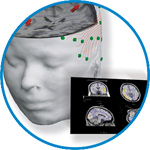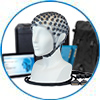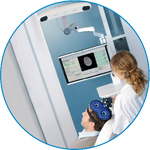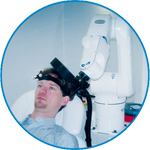- Home
- About ANT
-
Products

asa
asa is a highly flexible EEG/ERP and MEG analysis package with a variety of source reconstruction, signal analysis and MRI processing features.
.jpg)
eego mylab
The new frontier in multimodal brain research. With up to 16 kHz sampling rate, 256 EEG channels and unique software features, eego mylab gives you an unprecedented in-depth understanding of the human brain.

eego sports
eego sports offers complete freedom to collect high-density EEG data, bipolar EMG signals, and a variety of physiological sensor data, wherever and whenever required, with publish quality data in less than 15 minutes!

waveguard net
The waveguard net sets a new standard for research applications requiring high-density EEG data acquisition with quick preparation time, high flexibility, and subject comfort.

visor2
Our new and upgraded visor2 solutions integrate all the latest technologies for navigated rTMS, dual-coil navigation support, EEG-TMS recordings and pre-surgical evaluation for the highest quality in research and clinical procedures.

powerMAG ANT
The PowerMAG ANT 100 rTMS stimulator is designed for the specific needs of high-end TMS applications. Powerful high-frequency TMS as well as high precise single pulse and repetitive pulse protocols are combined in one single device.

xensor
xensor offers the solution for digitization of 3D electrode positions. xensor takes care of the whole procedure; it records, visualizes and stores positions acquired with a dedicated digitizer.

waveguard original
waveguard original is the cap solution for EEG measurements compatible with fMRI, MEG and TMS system. Use of active shielding guarantees performance in even the most demanding environments.

waveguard connect
waveguard connect EEG caps are a perfect match for hospitals and institutes aiming at reliable EEG, maximum uptime and great patient comfort! For optimal signal quality, the electrodes are made of pure, solid tin.

waveguard touch
waveguard touch is a dry electrode EEG cap. The unique Ag/AgCl coated soft polymer electrodes provide stable, research-grade EEG signals while maintaining subject comfort. The combination of these innovative dry electrodes and the industry-leading waveguard cap makes waveguard touch the best solution for dry EEG.

smartmove
smartmove allows planning of a complete TMS session ahead by defining stimulation sites based on anatomical MRI information and functional information like fMRI, PET or EEG/MEG.
Stay - References
- Support
- Events
- News
- Contact Us
You are here
Proficient brain for optimal performance: the MAP model perspective
Proficient brain for optimal performance: the MAP model perspective
Background. The main goal of the present study was to explore theta and alpha event-related desynchronization/synchronization (ERD/ERS) activity during shooting performance. We adopted the idiosyncratic framework of the multi-action plan (MAP) model to investigate different processing modes underpinning four types of performance. In particular, we were interested in examining the neural activity associated with optimal-automated (Type 1) and optimal-controlled (Type 2) performances.
Methods. Ten elite shooters (6 male and 4 female) with extensive international experience participated in the study. ERD/ERS analysis was used to investigate cortical dynamics during performance. A 4 × 3 (performance types × time) repeated measures analysis of variance was performed to test the differences among the four types of performance during the three seconds preceding the shots for theta, low alpha, and high alpha frequency bands. The dependent variables were the ERD/ERS percentages in each frequency band (i.e., theta, low alpha, high alpha) for each electrode site across the scalp. This analysis was conducted on 120 shots for each participant in three different frequency bands and the individual data were then averaged.
Results. We found ERS to be mainly associated with optimal-automatic performance, in agreement with the “neural efficiency hypothesis.” We also observed more ERD as related to optimal-controlled performance in conditions of “neural adaptability” and proficient use of cortical resources.
Discussion. These findings are congruent with the MAP conceptualization of four performance states, in which unique psychophysiological states underlie distinct performance-related experiences. From an applied point of view, our findings suggest that the MAP model can be used as a framework to develop performance enhancement strategies based on cognitive and neurofeedback techniques.
Read the full article by following this link.

 Read more
Read more.jpg)




